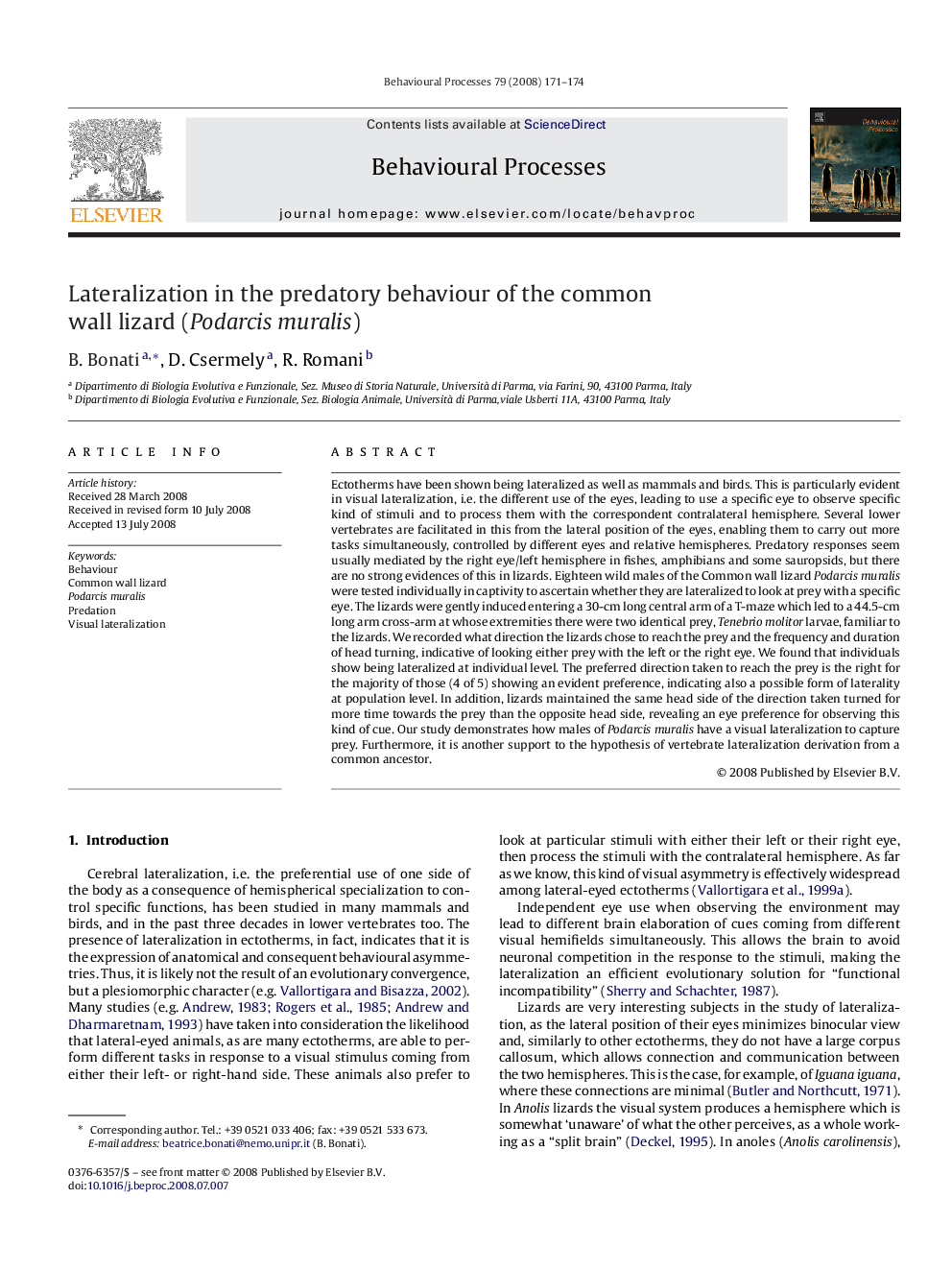| کد مقاله | کد نشریه | سال انتشار | مقاله انگلیسی | نسخه تمام متن |
|---|---|---|---|---|
| 2427673 | 1105972 | 2008 | 4 صفحه PDF | دانلود رایگان |

Ectotherms have been shown being lateralized as well as mammals and birds. This is particularly evident in visual lateralization, i.e. the different use of the eyes, leading to use a specific eye to observe specific kind of stimuli and to process them with the correspondent contralateral hemisphere. Several lower vertebrates are facilitated in this from the lateral position of the eyes, enabling them to carry out more tasks simultaneously, controlled by different eyes and relative hemispheres. Predatory responses seem usually mediated by the right eye/left hemisphere in fishes, amphibians and some sauropsids, but there are no strong evidences of this in lizards. Eighteen wild males of the Common wall lizard Podarcis muralis were tested individually in captivity to ascertain whether they are lateralized to look at prey with a specific eye. The lizards were gently induced entering a 30-cm long central arm of a T-maze which led to a 44.5-cm long arm cross-arm at whose extremities there were two identical prey, Tenebrio molitor larvae, familiar to the lizards. We recorded what direction the lizards chose to reach the prey and the frequency and duration of head turning, indicative of looking either prey with the left or the right eye. We found that individuals show being lateralized at individual level. The preferred direction taken to reach the prey is the right for the majority of those (4 of 5) showing an evident preference, indicating also a possible form of laterality at population level. In addition, lizards maintained the same head side of the direction taken turned for more time towards the prey than the opposite head side, revealing an eye preference for observing this kind of cue. Our study demonstrates how males of Podarcis muralis have a visual lateralization to capture prey. Furthermore, it is another support to the hypothesis of vertebrate lateralization derivation from a common ancestor.
Journal: Behavioural Processes - Volume 79, Issue 3, November 2008, Pages 171–174